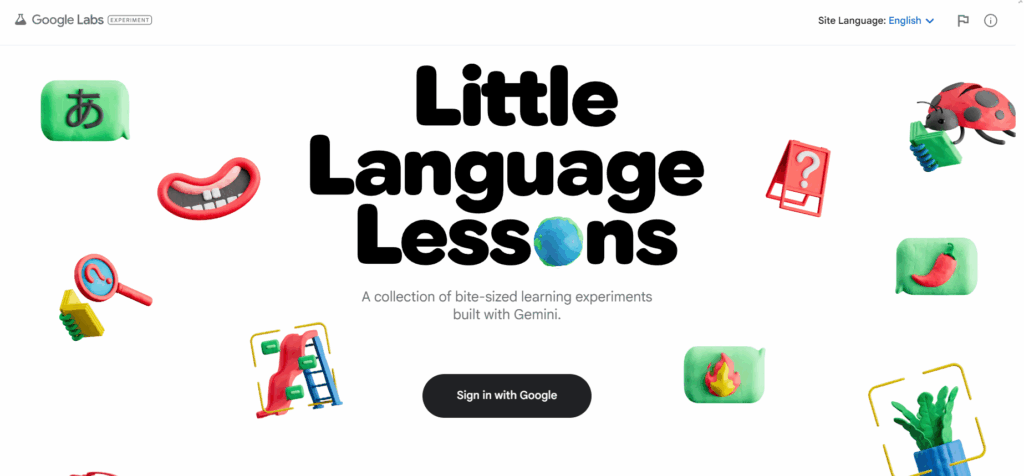Google is taking another step forward – introducing new artificial intelligence (AI) tools that could support language learning. For users, this promises changes, as the integration of AI into existing language study apps could provide a more personalized learning experience. So, what are these new tools?
A More Advanced Language Learning Process
At the end of April, Google introduced three new AI experiments – the Little Language Lessons collection, designed to help users learn to speak a new language through a personalized experience. Although Google is still taking its first steps in this area, experts have already noted that this innovation, powered by Gemini models, has the potential to become a serious competitor to well-established language learning apps like Duolingo.
Each experiment in the collection focuses on a different learning method, helping users learn a new language in real-life contexts:
- Tiny Lesson – this tool gives access to vocabulary, phrases, or grammar nuances through specific situations. For example, you can describe a situation you care about, and the tool will provide additional vocabulary you might need, grammar tips, or even suggestions on how to respond in that situation – like losing your passport.
- Slang-Hang – this tool generates personalized conversations through which users can learn idioms or slang. Essentially, it shifts away from textbook-style language learning and offers opportunities to learn the language as it is actually spoken. During these personalized conversations, users are also exposed to realistic dialogues between native speakers. Depending on the scenario, they can analyse conversation nuances and expand their vocabulary.
- Word Cam – this tool helps expand vocabulary based on objects in your environment. You can take a photo of your surroundings, and the Gemini algorithms will identify objects and name them in the target language, providing additional words for those items.
You can try out these new Google tools by joining through Google Labs. The system currently supports the following languages:
- Arabic
- Chinese (China, Hong Kong, Taiwan)
- English (Australia, UK, USA)
- French (Canada, France)
- German
- Greek
- Hebrew
- Hindi
- Italian
- Japanese
- Korean
- Portuguese (Brazil, Portugal)
- Russian
- Spanish (Latin America, Spain)
- Turkish

What Innovations Do These Tools Bring to Language Learning?
According to the company, Google aims to explore how AI can be used for self-directed learning. These systems allow for fully individualized learning based on personal environments and real-life situations, which enables them to surpass traditional apps, including Duolingo, that often offer the same language learning content for all users.
As seen from the experiment descriptions, these tools approach language more flexibly and allow users to learn not only formal rules but also more specific aspects encountered in daily life. Therefore, personalization and the inclusion of the user’s personal context play a major role, making the experience much more appealing.
Final Thoughts
Once again, AI proves to hold great promise for users, and tech giants are discovering ever broader applications. As we look ahead, traditional solutions may face challenges, as modern language learning strategies open up more attractive paths. This means that language study platforms and apps will have to evolve alongside them.
If you are interested in this topic, we suggest you check our article:
- How Public Libraries Are Using Artificial Intelligence
- AI Tutors: A New Dawn for Educating the Next Generation
- OpenAI and Anthropic Compete for College Students with Free AI Tools
Sources: Google, TechCrunch
